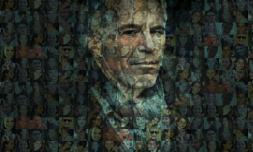Luxury fashion brand Balenciaga has unveiled a collaboration with Fortnite, which includes both physical and digital versions of branded clothing. Is this the future of luxury marketing?
Fortnite has been around for over four years, but still remains a commercial juggernaut that experiments with innovative marketing strategies, whether it be virtual concerts, unique cosmetics, or full-blown real time events.
Its latest venture sees high-end clothing brand Balenciaga feature exclusive skins and weapons in-game, alongside a physical merch drop on its website should you want to look the part in real life.
This isn’t the first time we’ve seen Fortnite take on top-end commercial properties. Remember when Travis held a live event that included a giant virtual avatar and an exploding black hole?
These types of stunts are becoming more commonplace – and reaching beyond just Epic Games.
How is the collaboration being rolled out?
Skins are available via the Fortnite Battle Pass shop for a limited time, with four unique player options to choose from.
One is a pug in a Fortnite hoodie, another a knight with Balenciaga clothing on over metallic armour, amongst others, while a selection of backpacks are also on offer in a variety of styles and aesthetics.
Weapons have been given a re-touch too, with the standard melee weapon now resembling a sneaker on a stick. It’s unique, if nothing else.
It’s not just digital clothing receiving a shake-up. Physical items are available via the Balenciaga website, which includes hoodies, caps, denim jackets, and sweaters. Just don’t spend too long looking at those prices, they’ll make your head spin.
These unusual and unexpected brand collaborations are becoming increasingly common as e-sports and virtual spaces continue to prove themselves as commercially viable. If business is to be had via online multiplayer shooters, you can bet that top brands will want to appeal to a new generation, even if it’s somewhat unconventional.




















